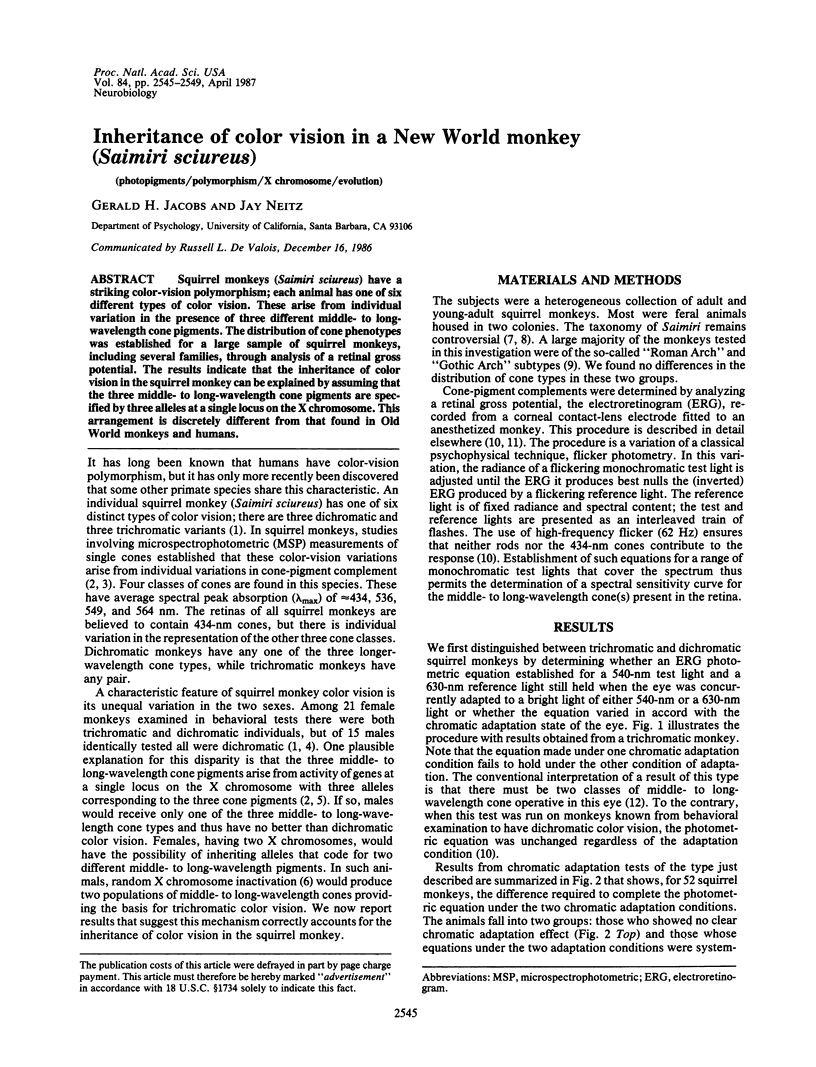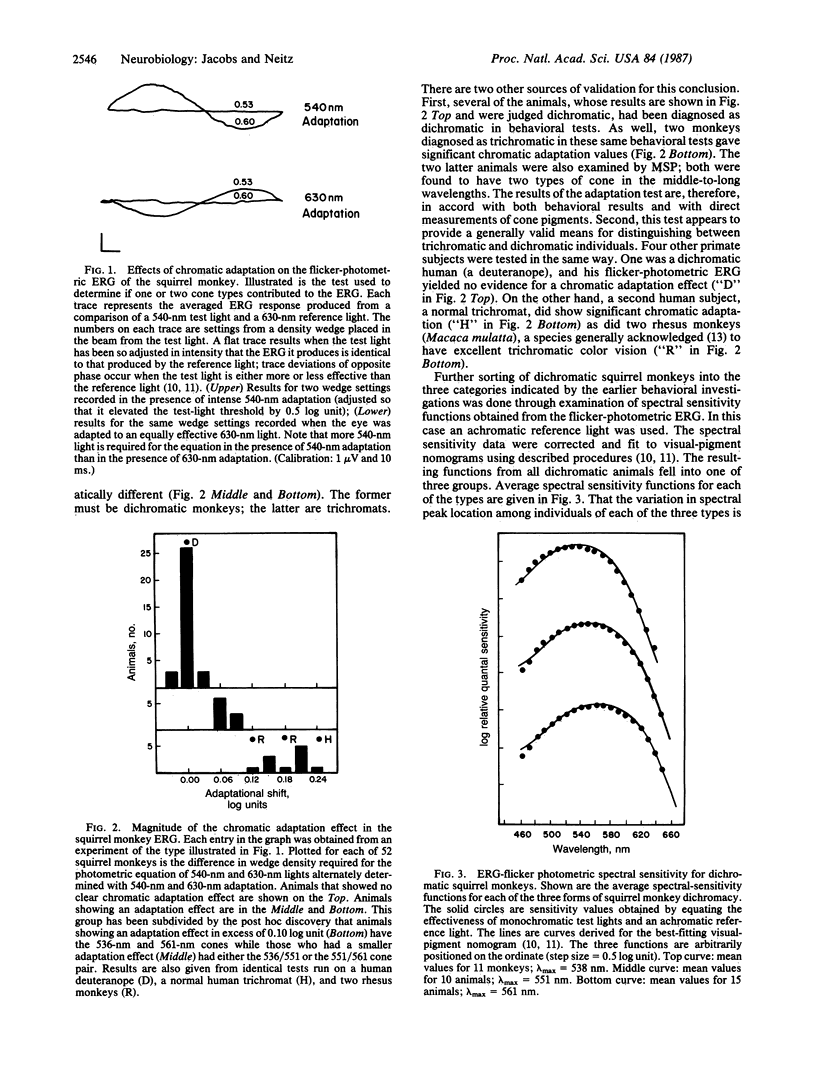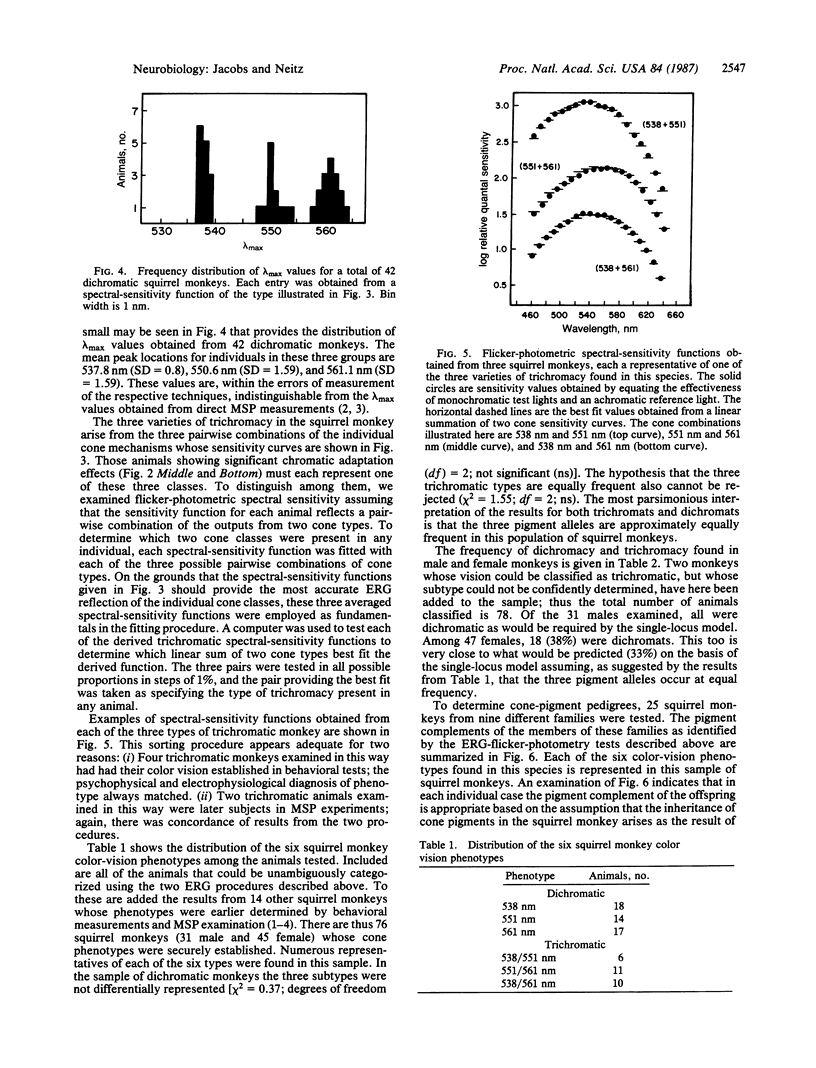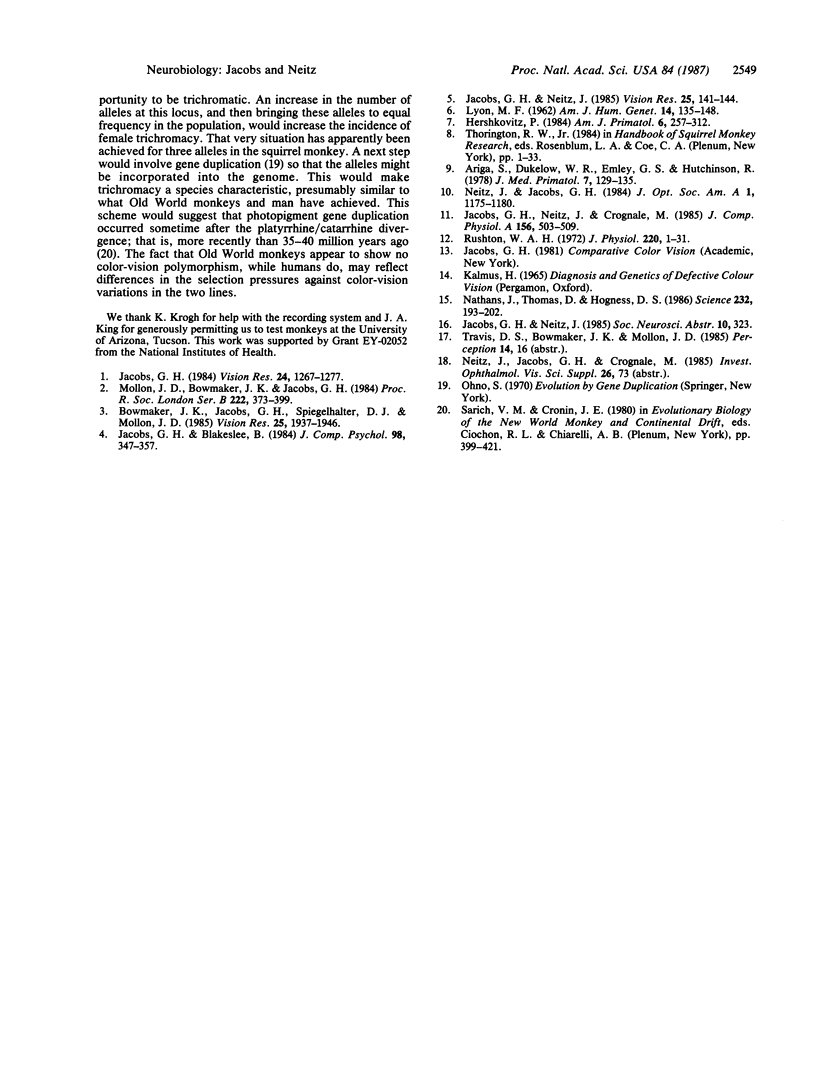Abstract
Squirrel monkeys (Saimiri sciureus) have a striking color-vision polymorphism; each animal has one of six different types of color vision. These arise from individual variation in the presence of three different middle- to long-wavelength cone pigments. The distribution of cone phenotypes was established for a large sample of squirrel monkeys, including several families, through analysis of a retinal gross potential. The results indicate that the inheritance of color vision in the squirrel monkey can be explained by assuming that the three middle- to long-wavelength cone pigments are specified by three alleles at a single locus on the X chromosome. This arrangement is discretely different from that found in Old World monkeys and humans.
Full text
PDF




Selected References
These references are in PubMed. This may not be the complete list of references from this article.
- Ariga S., Dukelow W. R., Emley G. S., Hutchinson R. R. Possible errors in identification of squirrel monkeys (Saimiri sciureus) from different South American points of export. J Med Primatol. 1978;7(3):129–135. doi: 10.1159/000459802. [DOI] [PubMed] [Google Scholar]
- Bowmaker J. K., Jacobs G. H., Spiegelhalter D. J., Mollon J. D. Two types of trichromatic squirrel monkey share a pigment in the red-green spectral region. Vision Res. 1985;25(12):1937–1946. doi: 10.1016/0042-6989(85)90018-5. [DOI] [PubMed] [Google Scholar]
- Jacobs G. H., Blakeslee B. Individual variations in color vision among squirrel monkeys (Saimiri sciureus) of different geographical origins. J Comp Psychol. 1984 Dec;98(4):347–357. [PubMed] [Google Scholar]
- Jacobs G. H., Neitz J. Color vision in squirrel monkeys: sex-related differences suggest the mode of inheritance. Vision Res. 1985;25(1):141–143. doi: 10.1016/0042-6989(85)90088-4. [DOI] [PubMed] [Google Scholar]
- Jacobs G. H. Within-species variations in visual capacity among squirrel monkeys (Saimiri sciureus): color vision. Vision Res. 1984;24(10):1267–1277. doi: 10.1016/0042-6989(84)90181-0. [DOI] [PubMed] [Google Scholar]
- LYON M. F. Sex chromatin and gene action in the mammalian X-chromosome. Am J Hum Genet. 1962 Jun;14:135–148. [PMC free article] [PubMed] [Google Scholar]
- Mollon J. D., Bowmaker J. K., Jacobs G. H. Variations of colour vision in a New World primate can be explained by polymorphism of retinal photopigments. Proc R Soc Lond B Biol Sci. 1984 Sep 22;222(1228):373–399. doi: 10.1098/rspb.1984.0071. [DOI] [PubMed] [Google Scholar]
- Nathans J., Thomas D., Hogness D. S. Molecular genetics of human color vision: the genes encoding blue, green, and red pigments. Science. 1986 Apr 11;232(4747):193–202. doi: 10.1126/science.2937147. [DOI] [PubMed] [Google Scholar]
- Neitz J., Jacobs G. H. Electroretinogram measurements of cone spectral sensitivity in dichromatic monkeys. J Opt Soc Am A. 1984 Dec;1(12):1175–1180. doi: 10.1364/josaa.1.001175. [DOI] [PubMed] [Google Scholar]
- Stephens J. A., Taylor A. Fatigue of maintained voluntary muscle contraction in man. J Physiol. 1972 Jan;220(1):1–18. doi: 10.1113/jphysiol.1972.sp009691. [DOI] [PMC free article] [PubMed] [Google Scholar]


